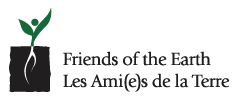SCC Intervention – Carbon Pricing & Women and Girls
On September 22 and 23rd, the Supreme Court of Canada will hear the appeal of the Greenhouse Gas Pollution Pricing Act case, also commonly called the carbon pricing case, where the National Association of Women and the Law (NAWL) and Friends of the Earth (FOE) have joined forces to intervene. By being granted leave to intervene, the two organizations may bring forward arguments that focus both on the unique challenges of climate change as well the particular implications of the issue on women and girls.
What’s the case?
Canada has ratified the United Nations Framework Convention on Climate Change as well as the Paris Agreement, both international agreements, in an effort to stabilize the greenhouse gas concentration in the atmosphere and reduce the global average temperature increase to limit the risks and impacts of climate change. A key element of Canada’s action plan to combat climate change is the Greenhouse Gas Pollution Pricing Act. However, several provinces challenged the Act before their respective courts, and the case will now be heard by the Supreme Court of Canada.
The case before the Supreme Court relates to whether the Greenhouse Gas Pollution Pricing Act [the Act] is constitutional, either in whole or in part, or not. The Act implements a federal carbon pollution pricing system that establishes minimum national standards as a means to combat the harmful effects of greenhouse gases and in an effort to keep with national and international climate change targets. The Attorney General of Canada maintains that the federal government is well within its powers to legislate on the regulation of greenhouse gas emissions.
Who’s involved?
The parties
The Supreme Court will hear from the provinces of Alberta, Ontario and Saskatchewan, who oppose the Act, as well as the government of Canada and British Columbia, who are defending its enactment. The provinces question the constitutional validity of the Act as the Constitution Act of 1867 sets out a division of powers between the federal and provincial governments and, according to them, the Act oversteps provincial jurisdiction. The highest courts of Ontario and Saskatchewan both sided with the federal government in finding that the Act did not surpass the provincial jurisdiction as set out in the constitution. However, when faced with the question, the highest court of Alberta differed and found that the federal government did not act within its powers by enacting the legislation.
The intervenors
Due to the far-reaching implications of this case, over 25 intervenors will appear before the court to add to the arguments brought forth by the main parties. Amongst them are several cities, others provincial attorneys general, Indigenous groups, such as the Assembly of First Nations. As the case has fiscal implications, groups such as the Canadian Taxpayers Federation and Canada’s Ecofiscal Commission will also appear before the courts. Other intervenors also include various environmental groups as the case pertains to pressing environmental issues.
A complete list of the intervenors appearing before the court can be found here.
NAWL/FOE intervention
NAWL and FOE are collaboratively appearing before the highest court as joint intervenors and are the only intervenors whose arguments are primarily focused on the necessity of considering the effects of climate change on women and girls. Chief Justice Richards of the Saskatchewan Court of Appeals noted that “climate change caused by anthropogenic greenhouse gas [GHG] emissions is one of the great existential issues of our time”[1]. Thus, it explains the importance of the question before the court and the need to consider all facets of the subject. As NAWL/FOE have stated in their factum, “[c]limate change is a global and national emergency that has disproportionate impacts on vulnerable groups, including women and girls”[2]. The government of Canada is aware of the ways in which and women and girls are adversely impacted by the climate crises as it has indicated that, «[w]omen’s traditional roles as the primary users and managers of natural resources, primary caregivers, and keepers of the home mean that they are involved in and depend on livelihoods and resources that are put most at risk by climate change » [3].
NAWL/FOE therefore argue that the division of powers between the federal and provincial government must be interpreted in a way that the two branches of governments can collaborate in an effective manner to respond to the pressing issue that is climate change, including, in light of their legal obligations to respect, protect and fulfil the rights of women and girls in the context of climate change. In other words, the interpretation of the constitutional division of powers must take into account the unprecedented changes our society is up against and bear that in mind. The full factum submitted by NAWL and FOE to the Supreme Court can be read here.
Following the case
Watching the case
The case is scheduled to appear before the Supreme Court on September 22nd and 23rd, with NAWL/FOE’s intervention being anticipated in the afternoon of the 23rd. The case will be broadcasted live on the Supreme Court of Canada website, which is available here.
The decision
Decisions from the Supreme Court usually take several weeks to months before they are rendered and published. Interested parties can watch the Supreme Court of Canada website for updates on the decisions as well as follow the following social media accounts:
National Association of Women and the Law (NAWL) Twitter
Friends of the Earth (FOE) Twitter
Supreme Court of Canada (SCC) Twitter
[1] Reference Re Greenhouse Gas Pollution Pricing Act, 2019 SKCA 40 at para 4.
[2] https://www.scc-csc.ca/WebDocuments-DocumentsWeb/38663/FM210_Intervener_National-Association-of-Women-and-the-Law-and-Friends-of-the-Earth.pdf
[3] https://www.canada.ca/en/environment-climate-change/services/climate-change/women.html
SCC Intervention by NAWL / FOE argues climate change more heavily impacts women and girls
In their factum, the joint intervenors raised the following points. “The harms of climate change will not be felt evenly but will fall more heavily on those who already face social and economic inequality and marginalization. For example, women are at a disadvantage in absorbing the additional costs associated with recovering from or preparing for the impacts of climate change, given that they have, on average, lower incomes than men and are more likely to live in poverty. Indigenous women have even lower average incomes and higher rates of poverty within the female population. Women are more likely than men to be responsible for child-care and the care of aging relatives, groups which are especially at risk from the effects of climate change. The Canadian government has recognized its responsibilities to consider gender when responding to climate change globally and nationally. Taking action to reduce national levels of GHG emissions, as the Act aims to do, is essential to support gender equality in Canada”.
For more information on the impacts of climate change on women and girls, the full factum submitted by NAWL and FOE to the Supreme Court can be read here.

Alex-Ann Rousseau is a student at the Faculty of Law, Ottawa U and prepared this briefing while working at their Human Rights Clinic.

